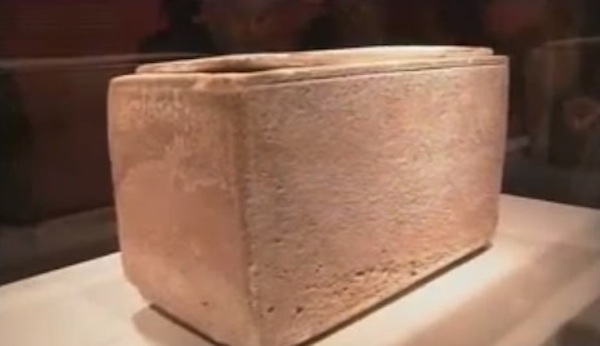Daniel 9:26 – Gabriel Reveals Events in the Gap between Weeks Sixty-Nine and Seventy
By GF Herrin
Verse 26 describes some of the events that were to take place after the first sixty-nine weeks had been completed. It is commonly believed that the prophecy regarding the Messiah being cut off refers to the Lord Jesus’ sacrifice for sins on the cross at Calvary (Anderson, 125). So, “cut off” could be understood to mean “killed”. It is obvious from the wording of the text, “after the sixty-two weeks”, that the cutting off would take place after the second set of weeks had been complete. The phrase “cut off” is similar to the wording used by Isaiah: “He was taken from prison and from judgment, and who will declare His generation? For He was cut off from the land of the living; for the transgressions of my people He was stricken” (Isa. 53:8). The interpretation of the verse in Daniel could also be that the Messiah would be cut off both from life and from having children. Jesus did not have any natural descendants so He was left with nothing and no one to survive Him. Also, the text states “but not for Himself.” This implies that the Messiah would die sacrificially, or for someone else. We know now that this refers to Christ who died as a ransom for our sins so that men could be reconciled to God through His Son’s shed blood on the cross. “For He made Him who knew no sin to be sin for us, that we might become the righteousness of God in Him” (2 Cor. 5:21).
The second part of this verse introduces “the prince who is to come” as someone who is distinctly different from the Messiah. The passage states that it will be the people “of the prince who is to come” who will destroy the city (Jerusalem) and the sanctuary (temple). The text states that the end would come like a flood. And until the war ended in Jerusalem and in Israel, desolations were determined that would occur. The understanding here is that a sudden attack or influx of a large army would cause the desolations to occur. We know from history that Jerusalem and the second temple were destroyed in A.D. 70 when the Romans laid siege to it.
Josephus describes the desolation of Israel after the war:
And truly, the very view itself was a melancholy thing, for those places which were adorned with trees and pleasant gardens, were now become desolate country every way, and its trees were all cut down. Nor could any foreigner that had formerly seen Judaea and the most beautiful suburbs of the city, and now saw it as a desert, but lament and mourn sadly at so great a change. For the war had laid all signs of beauty quite waste. Nor had anyone who had known the place before, had come on a sudden to it now, would he have known it again. But though he {a foreigner} were at the city itself, yet would he have inquired for it (Flavius Josephus, The Complete Works of Flavius Josephus, The Wars of the Jews, 1901, Chapter 1.1, 666).
Futurists, those who believe in a future fulfillment for certain prophetic Scripture, interpret “the prince who is to come” to be the same person who is the subject of verse 27 – “he”. This is the one who “shall confirm a covenant” and “bring an end to sacrifice and offering.” So, there is the understanding from verse 26 that the people who are of the same nationality as a future prince to come will be the ones who destroy Jerusalem and the temple. Since the destruction was in fact carried out by the people of Rome, or the Roman soldiers, we discern that future prince from verse 27 who confirms a covenant and stop the sacrifices and offerings made at the temple will in fact be a Roman or one of the people of the Roman Empire.
Preterists, those who believe that most of the prophetic Scripture of the Bible has been fulfilled, contend that this reference to the “prince who is to come” refers to Titus (Mauro, 26), who along with his soldiers besieged Jerusalem in A.D. 70. Mauro interprets this passage to say that the people under a contemporaneous ruler will destroy the city and temple rather than interpreting that the destruction will be accomplished by the people who are the same nationality as the ruler whose coming is yet future. Mauro seems to make this assertion because of his presupposition that “he” in verse 27 (see next section) refers to Christ, instead of the future ruler from the Roman Empire who many scholars believe is also referred to in Daniel 7:25 (Mauro, 29). Mauro, in essence, holds to the opinion that all of the prophecies of the seventy weeks were fulfilled by A.D. 70. Mauro writes, “Thus the entire prophecy of the Seventy Weeks encompasses in its scope the rebuilding of the city and the temple, and the final destruction of both. It covers the stretch of time from the restoration of the people to their land and the city in the first year of Cyrus, down to their dispersion by the Romans into all the nations of the world” (Mauro, 26).
But how is that possible? There is nothing in the text in verse 26 to cause someone to conclude that the destruction of Jerusalem and the temple, along with the dispersion of God’s people, Israel, takes place within the seventy weeks. All that can be concluded is that the events in verse 26 take place after the first sixty-nine weeks. Since the Messiah’s death, the destruction of the temple and the city of Jerusalem all occurred between the years of A.D. 2 and 70, well after the completion of the sixty-ninth week, this by necessity creates a gap between the sixty-ninth and seventieth weeks. Yet, Mauro insists that to suggest a gap between the sixty-ninth and seventieth weeks is to “destroy the prophecy as a whole” (Mauro, 37).
But Alva McClain suggests that Old Testament prophecy is not always given in a continuous chronology:
Although certain areas of the future are definitely clocked as to time sequence and extent, we shall find in Old Testament prophecy no absolutely continuous and unbroken chronology of the future. The prophets often saw together on the screen of revelation certain events which in their fulfillment would be greatly separated by centuries of time. This characteristic, so strange to western minds, was in perfect harmony with the oriental mind which was not greatly concerned with continuous chronology. And the Bible, humanly speaking, is an oriental book (Alva J. McClain, The Greatness of the Kingdom, 1974, 137).

